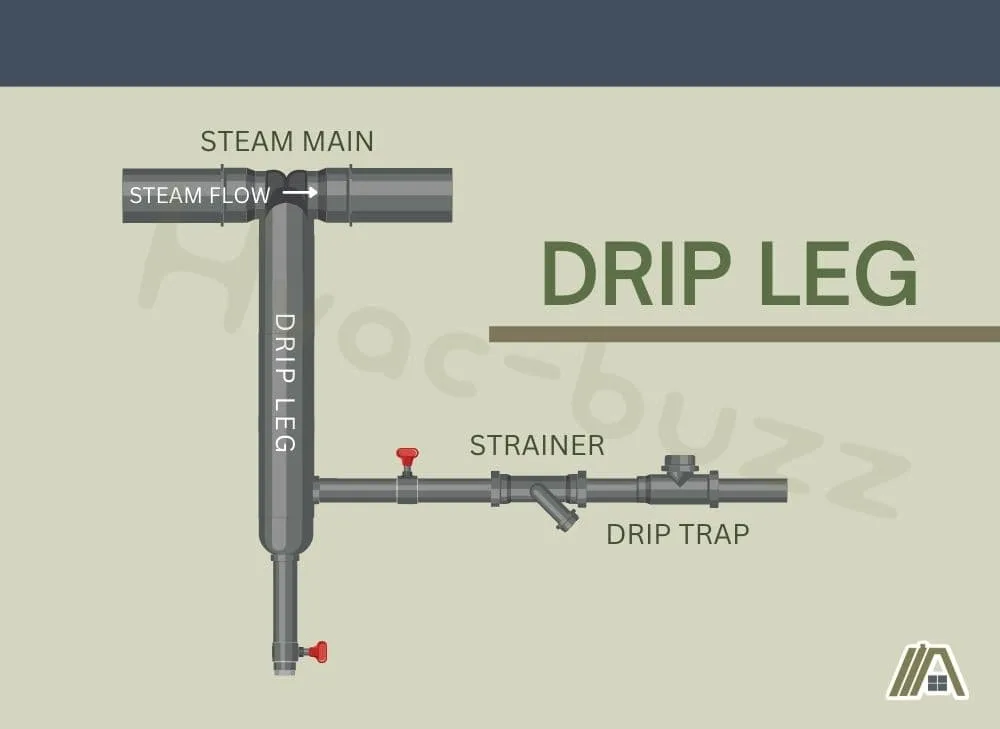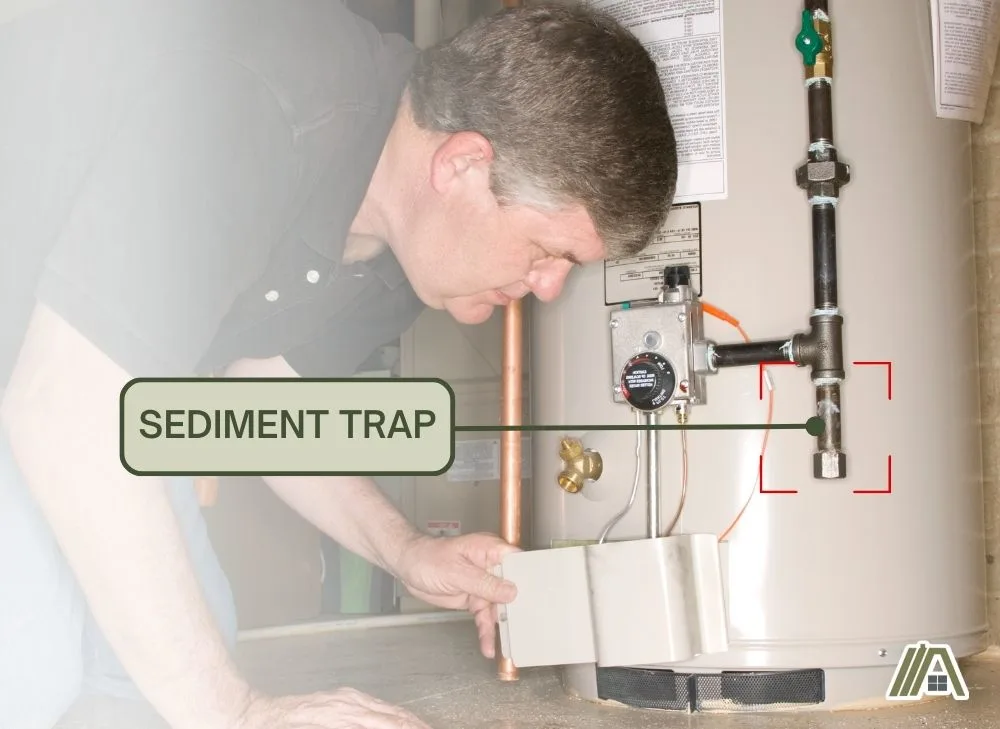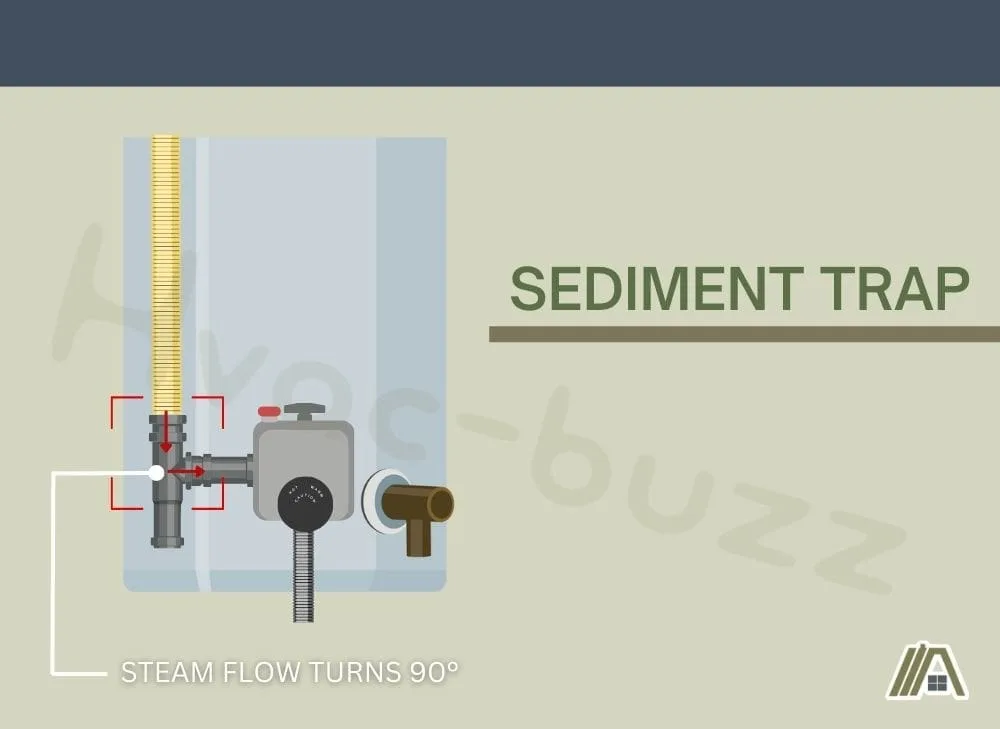
Drip legs and sediment traps are both devices that connect to gas pipes and protect a gas appliance by trapping a substance. A drip leg removes moisture from wet gas lines, and sediment traps remove sediment from gas pipes. These functions are achieved by the different orientations of the traps.
Difference Between a Drip Leg and a Sediment Trap: Overview
Both drip legs and sediment traps are traps designed to protect your gas appliance from damage and prevent them from becoming safety risks by filtering out substances from the pipeline.
Despite the confusion of the terms being used interchangeably, a drip leg and sediment trap are different apparatuses with different purposes. The drip leg catches moisture in wet gas lines, while the sediment trap is designed to catch dirt and debris in any gas line.
What is a Drip Leg?
Purpose
A drip leg is referred to as a “drip” in the International Residential Code (IRC; Section G2419.2), but you can also find it under the name dirt leg or drip tee.
A drip leg is a pipe trap that is designed to catch moisture that condenses out of wet gas.

The purpose of this is to keep that condensate out of the gas meter and appliance to prevent adverse effects from moisture entering the machine or getting into the gas assembly.
These adverse effects include causing blockages in gas flow as well as combustion troubles.
Wet gas is natural gas with a higher hydrocarbon compound content than methane (the normal gas supply line gas that feeds your home), which is why they are prone to condensation. The most common forms found in households are liquid propane and butane.
Where Are Drip Legs Found?
Drip legs are installed at the meter outlet on the gas pipeline of the appliance at a low point on the line. The drip must be easily accessible to allow for emptying.
Drip legs are used for any appliance that uses a wet gas, so you can find them (or install them) on the pipes of furnaces, heaters, fireplaces, boilers, water heaters, converted dryers, ovens, hobs, and grills.
Drip legs must be located where they will not freeze to prevent the pipe from cracking, which will allow gas to leak out.
Appearance and Design
Drip legs look like a “T” on the pipeline. Almost like there is space to add more piping onto the line, but running perpendicular to the main line.
The vertical leg is the container that catches the condensate from the gas as it drips and runs into the trap. The gas doesn’t change direction with a drip leg.
It is possible for light sediment to be taken over the trap with the flow of gas; it is just a place for the liquids in the pipe to pool away from your appliance.
Cost, Maintenance, and Replacement
A drip leg device can cost around $14.
Plumbers are the professionals who work with gas lines, so if you want to hire someone, they are the ones to call.
A drip leg installation may cost $75-$150 (average minimum charge), or it might be less (approximately $33-$89) if you are doing more than one installation or have several jobs for them to do in one call-out.
Maintenance of a drip leg is easy. You remove the detachable part of the device and empty out the condensate. This should be done every few years, like when you have the appliance serviced or repaired.
Replacement should be easy enough; it’s just about removing the fixture and putting in a new one. Again, a plumber will be able to handle this job and will ensure that the gas line is safe and sealed.
What is a Sediment Trap?
A sediment trap is also a fixture installed on an appliance’s gas pipes. However, this one catches dirt and debris before it can enter a gas appliance.

It can also trap liquids in the gas line but is used for any gas, not just wet gas.
This keeps dirt out of the appliance and gas line. Were it to enter these, it could interfere with the appliance’s function by causing blockages in the controls and the burner.
If there is no sediment trap, you have a higher risk of fires with the machine if the controls malfunction or the burner cannot use the gas properly.
Dirt and sediment do end up in the pipes, even though the line is sealed. These substances get into the line during instalment and can eventually make their way to the appliance over time.
Where Are Sediment Traps Found?
A sediment trap is located near the appliance on the gas pipeline. It sits downstream of the shutoff valve for the machine (between the valve and flex connector), and the IRC (Section G2419.4) says that the trap should be as close to the appliance as it can practically be.
The sediment trap is only necessary to install if it is not already built into the pipeline.
You need to check your local codes to ensure that there are no changes, but sediment traps are installed on gas appliances that operate automatically, like furnaces, water heaters, pool pumps, etc. However, there are a few appliances that do not require a sediment trap, according to the IRC:
- Gas fireplaces.
- Range hoods.
- Dryers.
- Illuminating appliances.
- Outdoor grills.
- Decorative vented appliances that you install in a vented fireplace.
Appearance and Design
A sediment trap looks similar to a drip leg, except the “T” is tipped on its side, with the container for the trap being located at the bottom with a removable cap at the end of a nipple of any length.
A sediment trap makes the gas turn 90° to reach the appliance through this design. By changing the direction of gas flow, the trap allows the heavier dirt and debris, as well as condensate, to drop into the trap while the gas can follow the turn.

That is the design described in the building code, but the IRC does permit an approved (i.e., has appropriate listing code) alternative device aside from the above tee fitting.
This fixture is generally constructed from different parts on-site instead of being a prefabricated device.
Cost, Maintenance, and Replacement
A sediment trap can cost $10-$14.
A plumber will likely charge approximately $75-$150 (average minimum charge) to install the trap. This can easily be included on an installation of a drip leg or a different job, which might give you better value for the call-out fee.
A sediment trap has a cap at the end of its leg, which can be removed to empty it.
Depending on how often the appliance is used, this can be done every 1-2 years to prevent the trap filling and sediment from getting into the appliance.
You can also turn off the gas and remove the trap from the line to clean it in a bucket with soapy and hot water.
If you don’t clear out your sediment trap, you can end up with a clogged gas valve, which is dangerous and makes itself known by creating a high-pitched whistle sound.
To replace the sediment trap, you can turn off the gas supply and remove the device before replacing it with the new one.
You can always hire a plumber to ensure everything is safe and secure. You can even call a plumber to clean the trap if you are concerned.
Table of Differences Between a Drip Leg and a Sediment Trap
| Drip Leg | Sediment Trap |
| Traps condensate in wet gas line | Traps sediment and moisture in gas line |
| Protects against compromised gas flow and combustion from blockages | Protects against blockages in the burner and appliance controls |
| Found at the outlet for the gas meter but mustn’t be at risk of freezing | Should be located between the shutoff valve and flex connector, as close to the appliance as possible |
| Looks like a “T” on the pipeline | Looks like a sideways “T” on the pipeline |
| Gas doesn’t change direction; it flows straight, and condensate drops down into the trap | Gas goes through a 90° turn to allow the gas to flow into the appliance while heavier sediment drops into the trap |
| Drip leg costs around $14 | Parts to create a sediment trap can cost $10-$14 |
| Container of drip leg can be removed and emptied | Cap of sediment trap can be removed and emptied |
Sources
https://homeguide.com/costs/gas-line-installation-cost#drip
https://houstonwaterheaters.com/what-is-a-sediment-trap-and-why-is-it-important/
https://www.ensureinspections.com/what-is-a-sediment-trap-where-does-it-go/
https://waypointinspection.com/sediment-trap/
https://atkinsoninspection.com/what-is-a-gas-line-sediment-trap/
https://jmcinspections.com/what-is-a-sediment-trap/
https://www.spacecityinspections.com/2013/07/Drip-Leg-VS-Sediment-Trap.html
https://www.thebuildingcodeforum.com/forum/threads/ifgc-sediment-trap.30355/
https://forum.nachi.org/t/hvac-drip-leg-vs-sediment-trap/198089/6
